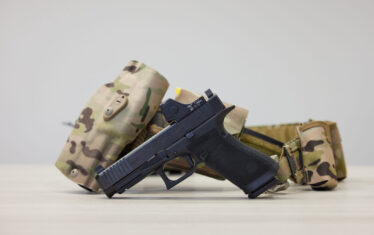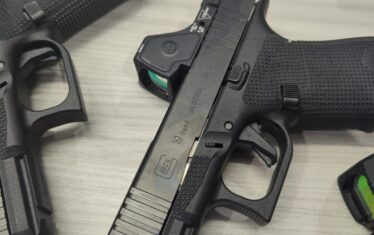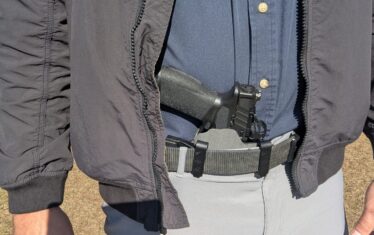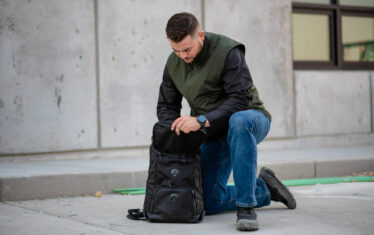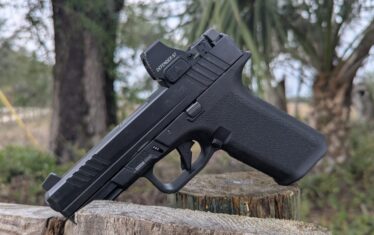Do you have or are you thinking about getting a drop-leg thigh holster? To many who are new to the gun world, it may seem like a holster is a holster and there’s not much difference between them. But once you start getting into the wide range of handguns and holsters available for them, it’s a whole new world.
Inside the waistband (IWB), outside the waistband (OWB), belt, paddle, pancake, shoulder, and drop-leg holsters are all options. Each one has its purpose and the need for a specific holster will vary with each person.

For an avid concealed carrier, IWB, OWB, and shoulder holsters are used frequently. Those training on the range or working in law enforcement, security, or the military will often wear duty/combat holsters. Many times, a drop-leg holster is worn for functionality and to accommodate other gear.
A drop-leg holster/thigh holster attaches to the thigh instead of directly to the belt. Depending on the type of holster, most will have one or two straps that go around the leg. A third strap or plastic attachment hooks to the belt or vest, keeping the leg holster at the desired location below the belt line. When wearing a drop-leg holster, the leg straps must be tight enough to hold the holster in place. If not, it can start to move around, making it harder to draw the gun.
Why a drop-leg thigh holster?
The most common reason to use a drop-leg thigh holster is because of body armor and load-bearing vests. Items on the tactical vest can inhibit drawing from a traditional holster. Some duty holsters sit away from the body to leave room for a tactical vest, but there are times when this is not enough room. A drop-leg holster allows the user to draw the firearm easily from a lower position.
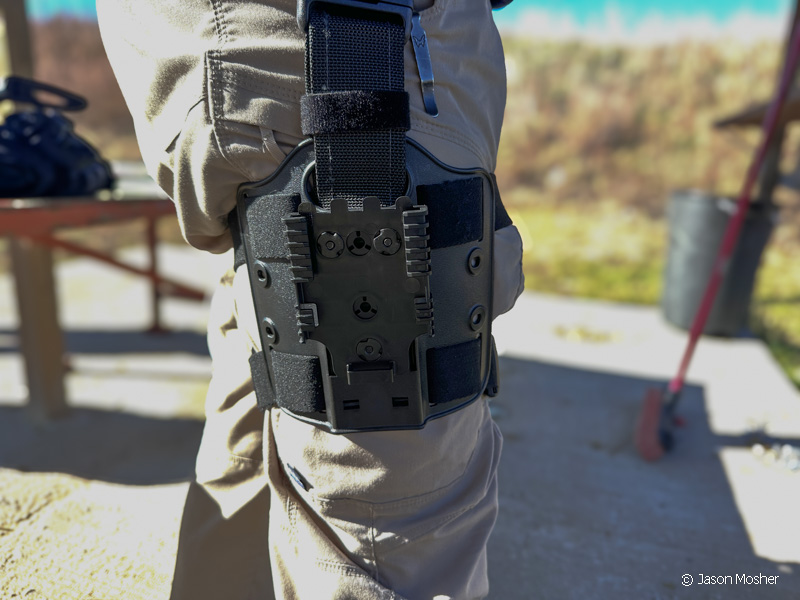
When wearing tactical gear, a thigh holster is more accessible when sitting in a car or in other areas as well. Besides the aspect of a tactical plate carrier, a drop-leg holster is faster to draw from in many cases. This is because it sits closer to the natural position of a person’s hand. Depending on a person’s arm/torso ratio, a thigh holster may be easier to draw than a traditional one.
Accessibility in cold weather is another factor to consider. If a large, bulky coat must be worn, a drop-leg holster keeps the gun below the coat so it can still be drawn.
Also, it is important to be aware of the movement of the holster when the person wearing it is walking or running. Because the holster is attached to the thigh, the gun will move with the leg it’s attached to. This can be difficult to draw when running as the top of the gun will be moving back and forth. It is important to wear the holster properly to keep it secure.
What type of thigh holster works best?
There are many drop-leg/thigh holsters on the market, but some of them allow the gun to sit too far down on the leg. The lower the gun sits on the leg the harder it is to control. If the purpose is to clear any bulky items worn on a vest, the gun should sit just low enough to clear those items. The higher it sits, the less movement the gun will have when you are running around.
One of the best thigh rigs on the market is the Safariland 6004-25 Single Strap Leg Shroud Adaptor. With this system, you can attach a holster directly to the leg shroud or use the QLS (quick locking system). The QLS system allows you to quickly move the holster from the leg shroud back to a belt or other attachment.
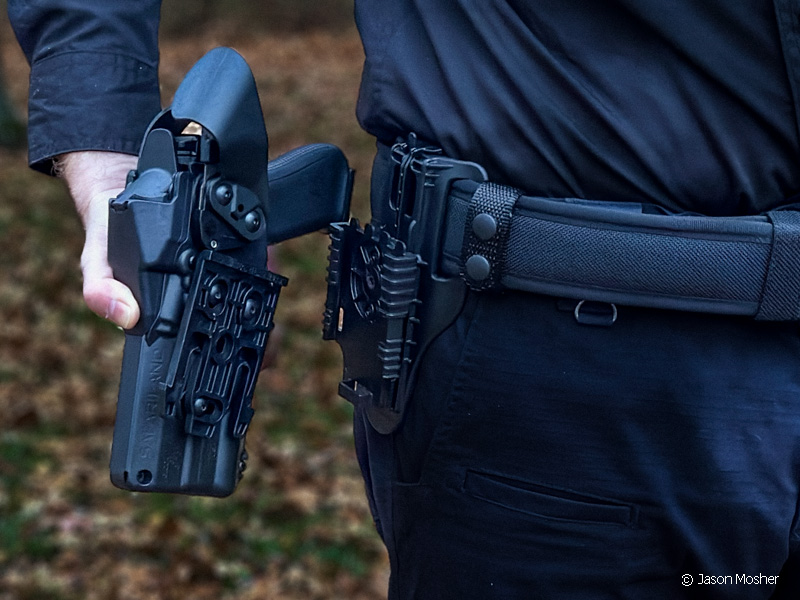
This system consists of a receiver plate that attaches to a belt or a leg shroud. On the back of the holster, you attach the QLS fork which then locks it into place on the receiver plate. You can buy just the holster fork separately and attach it to multiple Safariland holsters.
Like with any duty, tactical, or combat holster, having a good retention system is important. As mentioned above, the firearm can move around even more on a drop-leg system than a belt holster. Making sure the gun is easy to draw, but secure when not drawn, is paramount. If you are unfamiliar with holster retention, Safariland does a great job at explaining it on their Retention Levels Explained page.
What guns are used in drop-leg holsters?
A military drop-leg holster is used with the M17 9mm handgun by most members of the armed forces who carry a side arm. As discussed above, this is because it allows the gun to clear the body armor and other gear attached to the vest. Currently, the US Army has selected the Safariland MHHC Kit for their drop-leg/thigh holster.
The Glock 17 is probably the most used handgun with drop-leg holsters outside of the military. Because of the QLS system, any configuration of holster can be used with a drop-leg system. This could be gun-only, gun with light, or gun with light and optic.
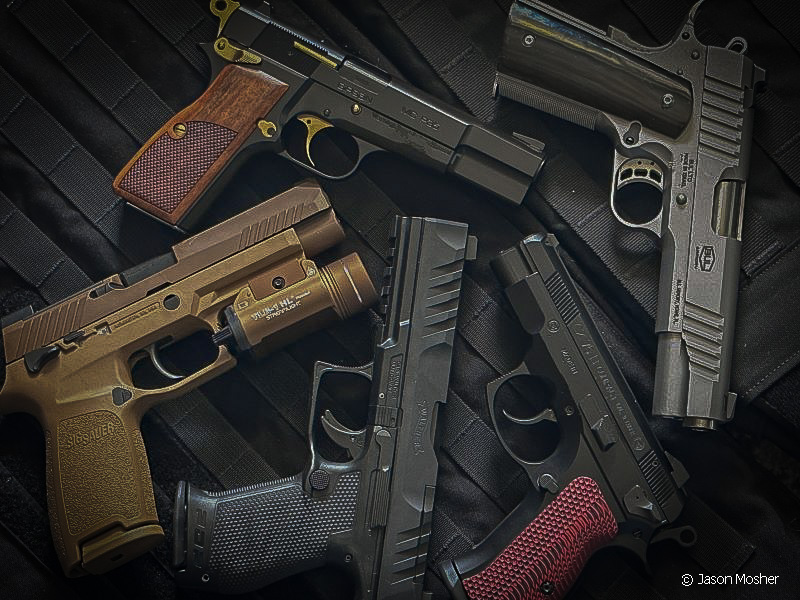
1911 handguns are also used with drop-leg holsters in the civilian and law enforcement world. A 1911 handgun often weighs more than a newer-style polymer gun. Removing the weight from the belt and distributing it on the lower thigh can help with back issues.
Other guns often used are the Glock 19, FN 509, Beretta M92, Sig P320, and other full-sized handguns. Most are made of polymer, but some drop-leg holsters are still made of leather, and some are constructed from Kydex.
Summary
Drop-leg holsters are practical for many purposes, but not for all. For example, it is hard to conceal a handgun when using a drop-leg holster. When not wearing a vest or plate carrier, the standard position is mid-ride on the belt. But again, it depends on the needs of the person wearing it. K9 units often use drop-leg holsters for the same reason as the military. K-9 officers often wear tactical-style vests, making a drop-leg holster system easier to use.
When selecting a holster, several things should be considered, but ultimately it comes down to what the person needs, likes, and is comfortable with. Safariland offers a wide range of holsters that have multiple levels of retention and work with lights and optics. If you are having trouble deciding what type of holster to use for your gun, try out the holster finder and see what options are available for your handgun.






